“Wilier Triestina got its start in a modest workshop on the banks of the river Brenta in San Fortunato by Pietro Dal Molin from Bassano del Grappa, Italy in the summer of 1906” – source, Wikipedia.org
“The company name originated as an acronym for the phrase “W l’Italia liberata e redenta”, where the W is an abbreviation for “Viva!”[2] (Long live Italy, liberated and redeemed).[3] Triestina comes from the name of the city of Trieste. When Wilier was founded, Trieste was not part of Italy; the name ‘Wilier Triestina’ reflected a patriotic desire for it to be rejoined.[4][5]“ – source, Wikipedia.org
Steel was the predominant material used in the construction of bicycle frames in 1906. A lot has changed since those early days. Nowadays, steel is joined by carbon fiber, titanium and aluminium, but steel tubing and the underlying molecular properties that go into those tubes has made great advancements since 1906.
Case in point is the Wilier Jaroon, one of two steel bikes designed specifically for the rigors of gravel. First spotted in 2016 at the annual Interbike trade show in Las Vegas, Nevada, the Jaroon and Jaroon Plus caught the eye of anyone who strolled anywhere near the Wilier booth.
The Jaroon’s double butted Chromoly steel frame features round tubes of different diameters for the frame’s primary tubes; down tube, top tube, seat tube, etc. Beyond that, the frame’s brushed steel finish is treated to a coating of lacquer which helps to prevent corrosion, in addition to making the frame sparkle.
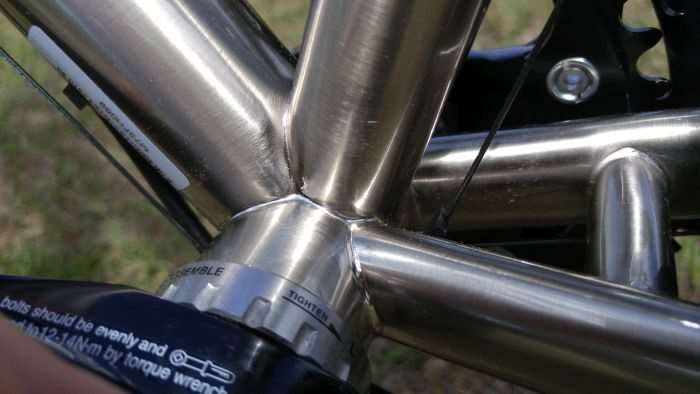
But what really sets the Jaroon apart from every other steel frame on the market is how those tubes are joined together. Using a proprietary technique, the frame is welded internally – welding material is inside the tubes and heated from the outside to create the union. The end result is a frame whose joins are clean and flawless.
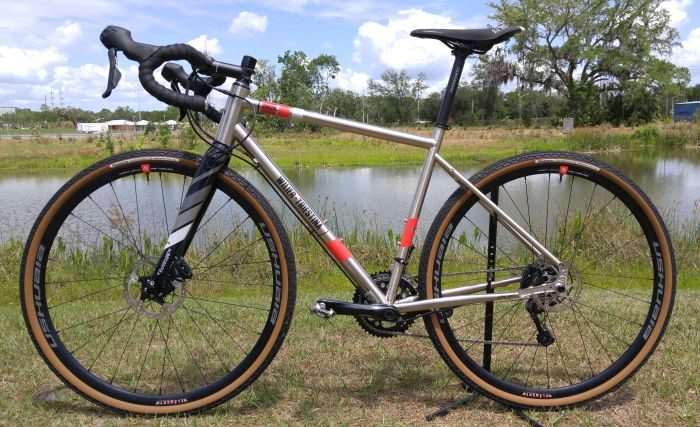 Bringing the complete Wilier Jaroon build into line with what is the accepted norm for gravel bikes in 2017, the Wilier branded carbon fork and steel frame both feature flat mounts for the disc brakes. Hydraulic brake housings and mechanical gear cable housings are run externally along the frame. This is a good feature if you’re the type who maintains your own bicycle – think ease of maintenance.
Bringing the complete Wilier Jaroon build into line with what is the accepted norm for gravel bikes in 2017, the Wilier branded carbon fork and steel frame both feature flat mounts for the disc brakes. Hydraulic brake housings and mechanical gear cable housings are run externally along the frame. This is a good feature if you’re the type who maintains your own bicycle – think ease of maintenance.
There is no provision for wired electronic shifting on this frame. However, if you’re handy with a drill and a dremel tool, that can easily be remedied. Bear in mind we are not recommending you modify your frame, that would most likely void your warranty.
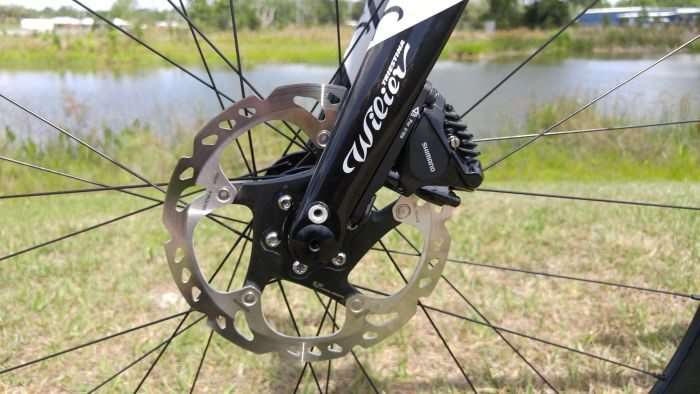 The tapered, all carbon Wilier branded fork routes the hydraulic brake housing through the inside of the left fork leg. Thru-axles are standard equipment at front and rear of the Jaroon – 12mm x 100mm for the front and 12mm x 142mm for the rear. Wilier spec a 160mm rotor on the front wheel. Note, I substituted the stock wheelset for much of this review – more on this later.
The tapered, all carbon Wilier branded fork routes the hydraulic brake housing through the inside of the left fork leg. Thru-axles are standard equipment at front and rear of the Jaroon – 12mm x 100mm for the front and 12mm x 142mm for the rear. Wilier spec a 160mm rotor on the front wheel. Note, I substituted the stock wheelset for much of this review – more on this later.
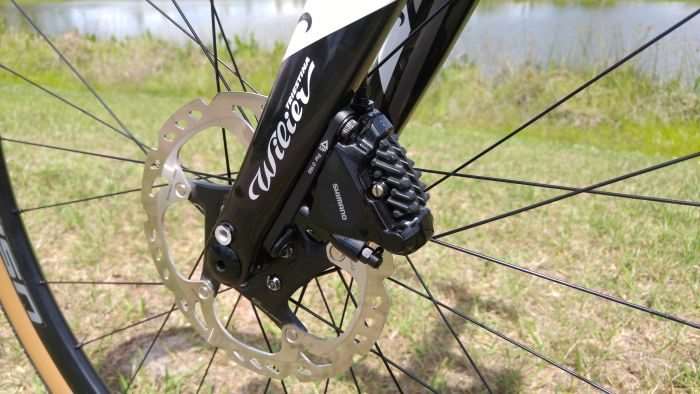 The fork also comes with fender mounts. Thru-bolt axles on the Wilier are not of the quick release type, thus you will need to carry a 5mm allen key to release the front wheel, or a 6mm allen key to release the rear wheel. That’s no problem around here at Gravel Cyclist, as our toolkit contains those handy items at all times. However, it would be nice if Wilier spec’d thru-bolts that require the same size allen key.
The fork also comes with fender mounts. Thru-bolt axles on the Wilier are not of the quick release type, thus you will need to carry a 5mm allen key to release the front wheel, or a 6mm allen key to release the rear wheel. That’s no problem around here at Gravel Cyclist, as our toolkit contains those handy items at all times. However, it would be nice if Wilier spec’d thru-bolts that require the same size allen key.
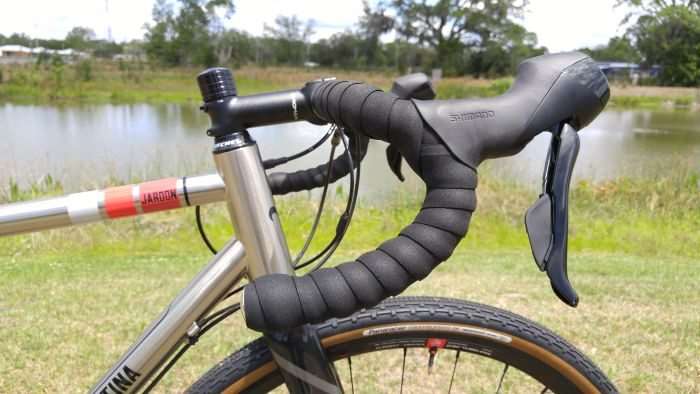 Our review sample of the Wilier Jaroon (size Medium, 54.5cm top tube) came fitted with Shimano’s 105 11-speed 2×11 drivetrain, and the company’s superb hydraulic disc brakes.
Our review sample of the Wilier Jaroon (size Medium, 54.5cm top tube) came fitted with Shimano’s 105 11-speed 2×11 drivetrain, and the company’s superb hydraulic disc brakes.
Pictured above are Shimano’s RS505 hydraulic STI levers. A little bulbous in appearance, they nevertheless offered excellent shifting performance and brake feel for the duration of the review.
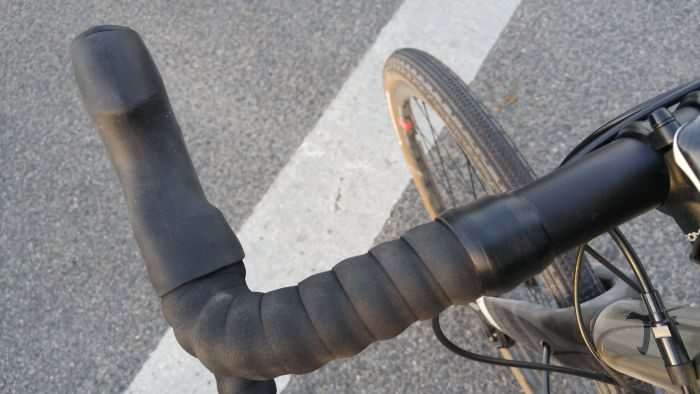 Above, the Shimano RS505 lever mostly resembles its mechanical brake brethren, but the hydraulic hose connector at the leading edge of the brake hood may bother some people.
Above, the Shimano RS505 lever mostly resembles its mechanical brake brethren, but the hydraulic hose connector at the leading edge of the brake hood may bother some people.
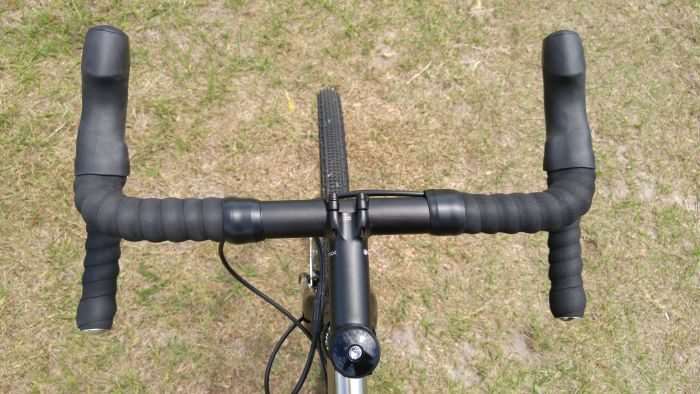 Promax brand components kit out the cockpit of the Wilier Jaroon.
Promax brand components kit out the cockpit of the Wilier Jaroon.
My review sample was fitted with a Promax DA-250 aluminium stem in 110mm, and Promax handlebars with a 12 degree flare.
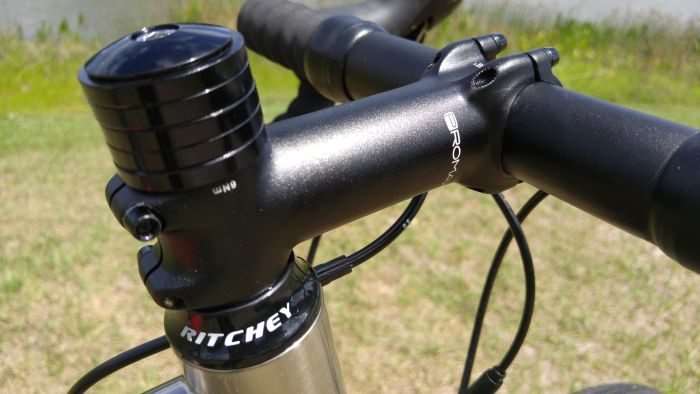 Above, pardon the spacers. It is generally bad form to cut short the steerer tube of a review bike. The Promax components are nothing to write home about, but they served their intended functions well. The flared handlebar won’t appeal to everyone, but your local Wilier dealer could probably facilitate a handlebar swap to something more fitting.
Above, pardon the spacers. It is generally bad form to cut short the steerer tube of a review bike. The Promax components are nothing to write home about, but they served their intended functions well. The flared handlebar won’t appeal to everyone, but your local Wilier dealer could probably facilitate a handlebar swap to something more fitting.
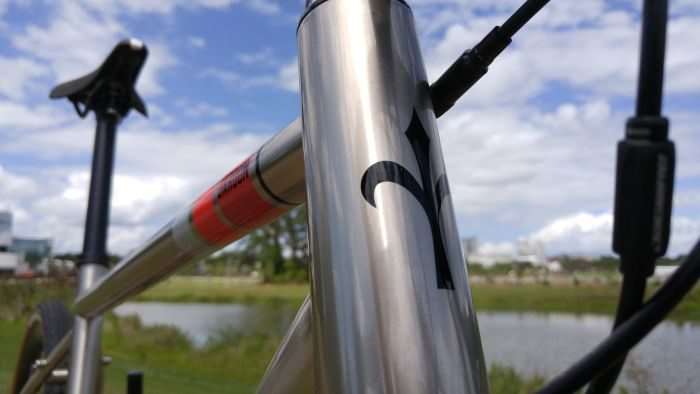 The Jaroon’s headtube measures 15cm in length. I prefer a shorter headtube, but the headtube isn’t overly lengthy to the point of the rider sitting bolt upright into the wind. Wilier have found a good middle ground with the geometry on the Jaroon. Frame angles are little slacker than your average road bike, which on paper should translate into easier handling when the gravel terrain gets a bit tricky.
The Jaroon’s headtube measures 15cm in length. I prefer a shorter headtube, but the headtube isn’t overly lengthy to the point of the rider sitting bolt upright into the wind. Wilier have found a good middle ground with the geometry on the Jaroon. Frame angles are little slacker than your average road bike, which on paper should translate into easier handling when the gravel terrain gets a bit tricky.
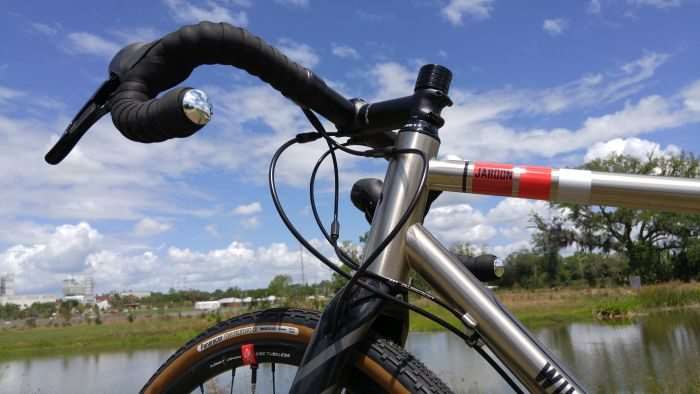
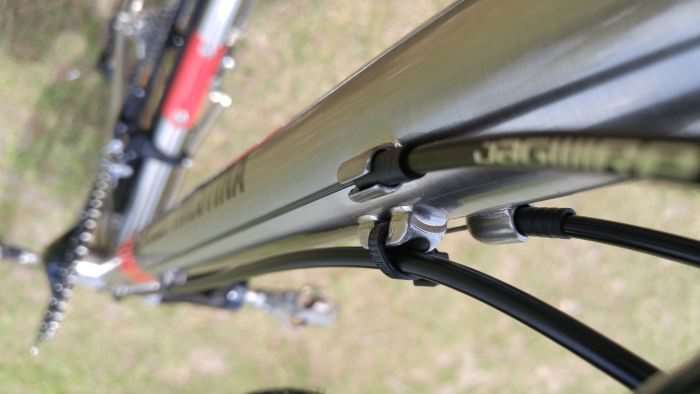 Above, the hydraulic rear brake housing runs the length of the down tube, down the middle. Mechanical shifting cables run either side. Jagwire housings and shifter cables are top notch, but potential buyers may want to think about a fully enclosed mechanical shifting system, particularly if they planning on riding the Jaroon in inclement weather.
Above, the hydraulic rear brake housing runs the length of the down tube, down the middle. Mechanical shifting cables run either side. Jagwire housings and shifter cables are top notch, but potential buyers may want to think about a fully enclosed mechanical shifting system, particularly if they planning on riding the Jaroon in inclement weather.
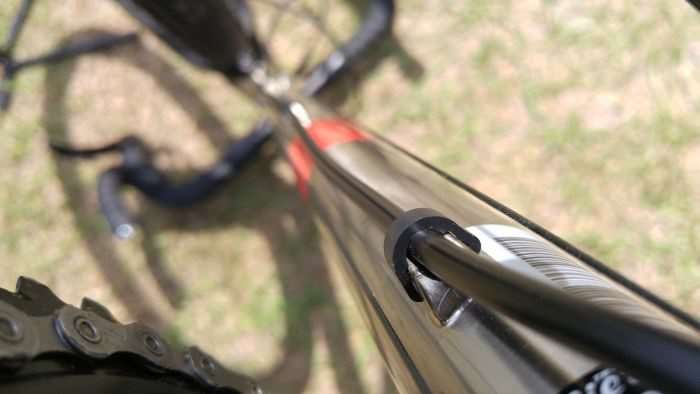 Another view of the hydraulic brake housing, but from the bottom bracket view of things.
Another view of the hydraulic brake housing, but from the bottom bracket view of things.
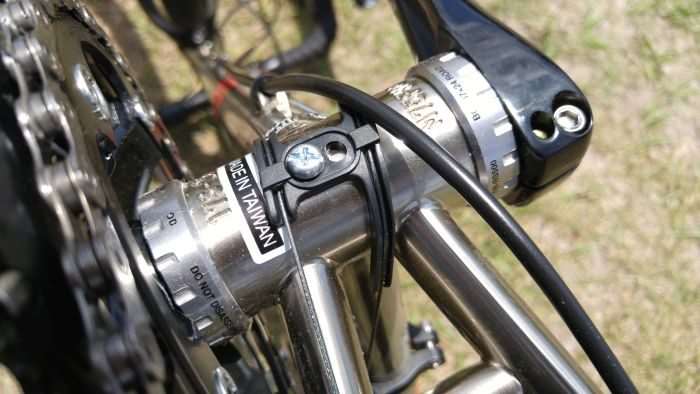 The Wilier Jaroon is a simple bike to work on for the pro or home mechanic. 68mm English thread bottom bracket cups, external bolt on cable guide and hydraulic brake housing routed over the top of the shifter cable guide. The hydraulic brake housing does come into contact with the shifter cable guide, but does not in anyway interfere with the shifter cables themselves.
The Wilier Jaroon is a simple bike to work on for the pro or home mechanic. 68mm English thread bottom bracket cups, external bolt on cable guide and hydraulic brake housing routed over the top of the shifter cable guide. The hydraulic brake housing does come into contact with the shifter cable guide, but does not in anyway interfere with the shifter cables themselves.
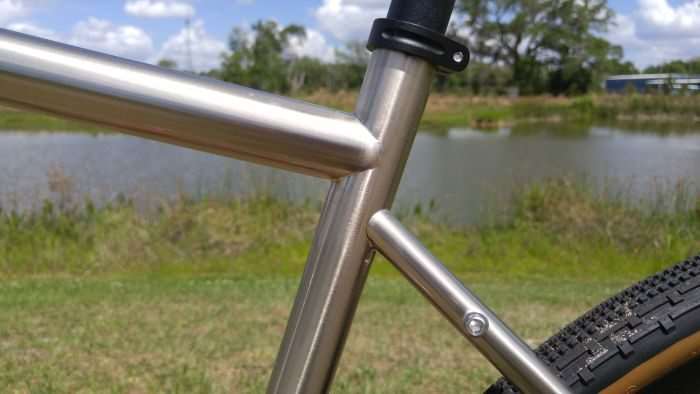 The Jaroon’s invisible welds are well illustrated at the top tube / seat tube / chainstay junction. Also, note the mounting point for a rack on the chainstay.
The Jaroon’s invisible welds are well illustrated at the top tube / seat tube / chainstay junction. Also, note the mounting point for a rack on the chainstay.
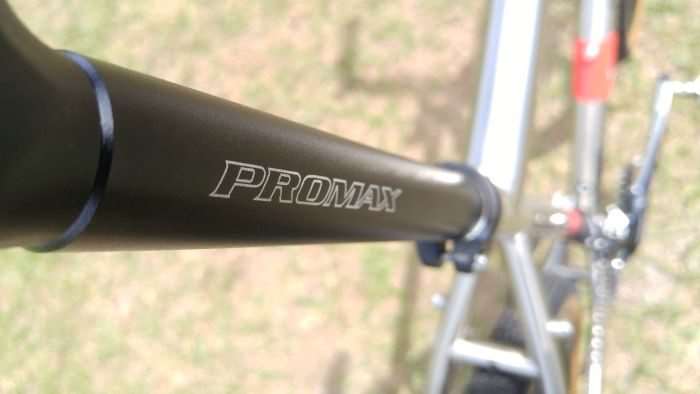 Wilier wisely choose a 27.2mm Promax branded seatpost. Not considered oversize, the smaller diameter 27.2mm flexes a little, which helps with overall comfort – an important factor on the rougher gravel roads out there.
Wilier wisely choose a 27.2mm Promax branded seatpost. Not considered oversize, the smaller diameter 27.2mm flexes a little, which helps with overall comfort – an important factor on the rougher gravel roads out there.
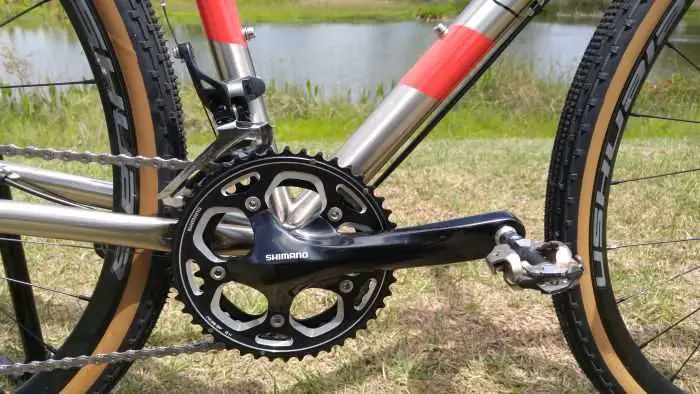 Chainrings on the Jaroon’s Shimano 105 crankset are 46 / 36, which is generally considered a cyclocross setup, but the 46 tooth ring is perfect for use on gravel. However, I’d prefer a 34 tooth small chainring. Just two teeth smaller, the 34 is a much better chainring for extended bouts of climbing. A minor quibble, and no reflection on the Wilier Jaroon.
Chainrings on the Jaroon’s Shimano 105 crankset are 46 / 36, which is generally considered a cyclocross setup, but the 46 tooth ring is perfect for use on gravel. However, I’d prefer a 34 tooth small chainring. Just two teeth smaller, the 34 is a much better chainring for extended bouts of climbing. A minor quibble, and no reflection on the Wilier Jaroon.
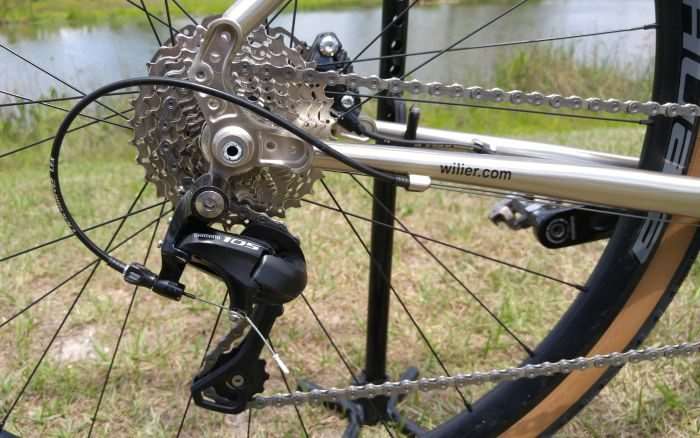 Wilier spec the mid-cage GS variant of the Shimano 105 rear derailleur, and pair it to an 11-32 11-speed 105 level cassette – a great combination for gravel riding or racing.
Wilier spec the mid-cage GS variant of the Shimano 105 rear derailleur, and pair it to an 11-32 11-speed 105 level cassette – a great combination for gravel riding or racing.
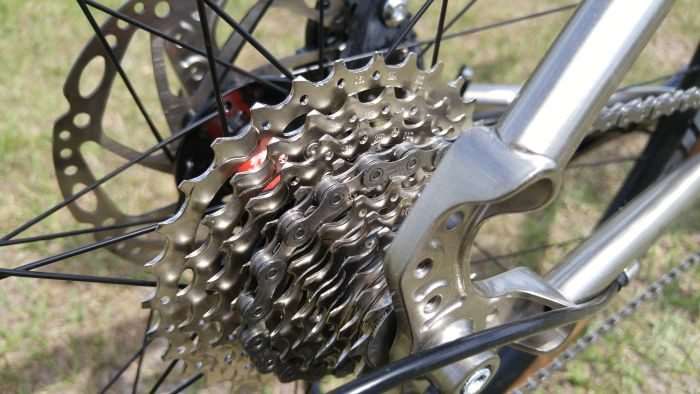
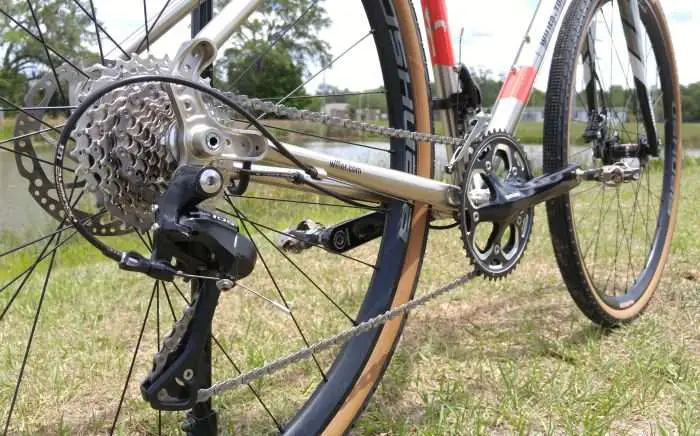 Above, a good view of the rear end of the Jaroon, including the industrial looking rear dropout.
Above, a good view of the rear end of the Jaroon, including the industrial looking rear dropout.
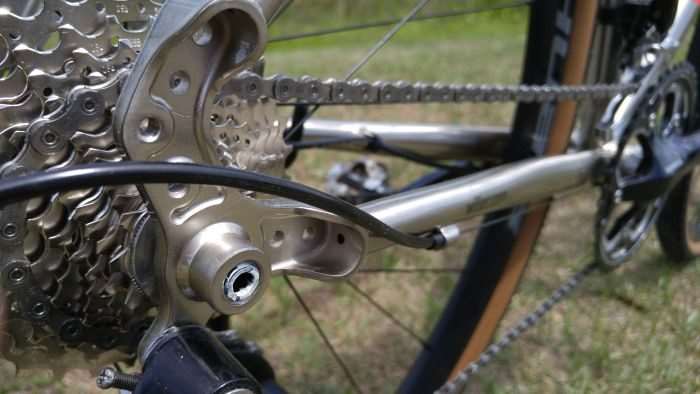 The dropouts also include separate mounting points for fenders or a rack.
The dropouts also include separate mounting points for fenders or a rack.
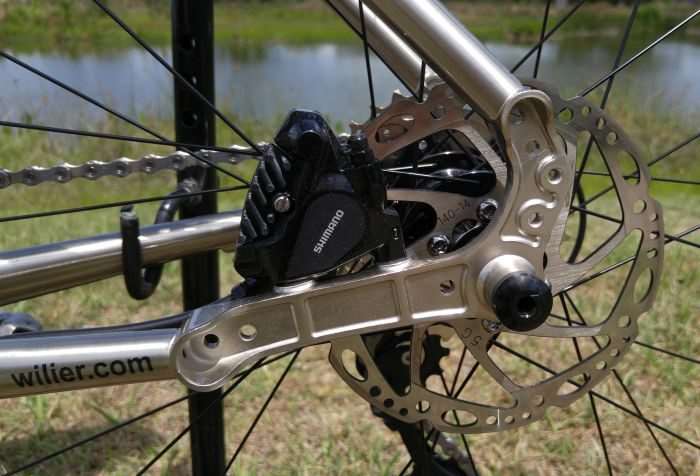 Flat mount disc brake for the rear end of the Jaroon, with a 140mm brake rotor as standard equipment. I feel a 160mm rotor would be more appropriate, and the weight gain is minimal.
Flat mount disc brake for the rear end of the Jaroon, with a 140mm brake rotor as standard equipment. I feel a 160mm rotor would be more appropriate, and the weight gain is minimal.
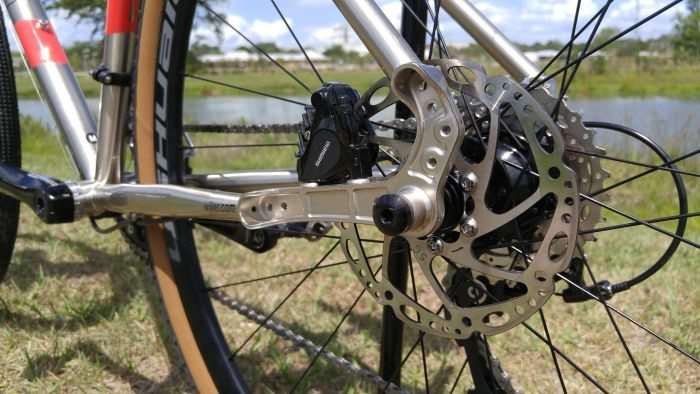
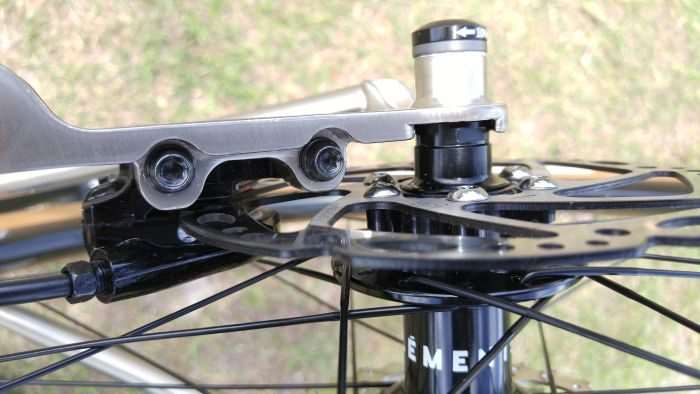 Above, looking from below the mounting point for the rear flat mount disc brake caliper. Flat mount brakes may offer some perceived advantages over the older post mount or ISO standard, but flat mounts come with their own setup issues. Centering a flat mount caliper isn’t as simple as post mount, at least with the type of flat mount as seen on the Wilier Jaroon. Regardless, once the rear brake was aligned in reference to the brake rotor, zero issues.
Above, looking from below the mounting point for the rear flat mount disc brake caliper. Flat mount brakes may offer some perceived advantages over the older post mount or ISO standard, but flat mounts come with their own setup issues. Centering a flat mount caliper isn’t as simple as post mount, at least with the type of flat mount as seen on the Wilier Jaroon. Regardless, once the rear brake was aligned in reference to the brake rotor, zero issues.
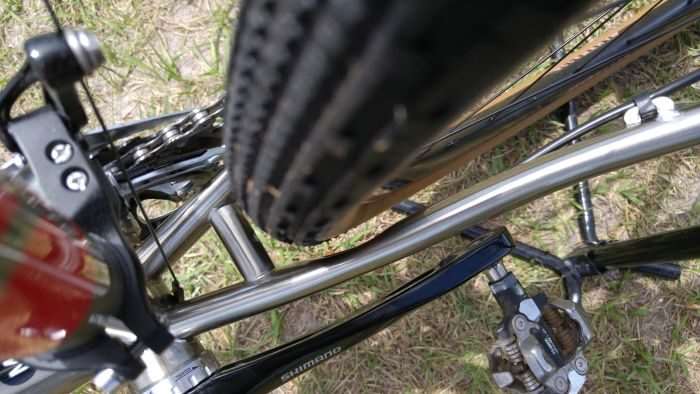 The Wilier Jaroon has plenty of tyre clearance for this Panaracer Gravelking SK in 700c x 35mm, fitted to a Clement Ushuaia wheelset. The Jaroon will clear a tyre that is 42mm in width, but play close attention to a 40mm tyre mounted on a wide rim. Such a tyre can grow in width between 42mm and 45mm.
The Wilier Jaroon has plenty of tyre clearance for this Panaracer Gravelking SK in 700c x 35mm, fitted to a Clement Ushuaia wheelset. The Jaroon will clear a tyre that is 42mm in width, but play close attention to a 40mm tyre mounted on a wide rim. Such a tyre can grow in width between 42mm and 45mm.
How does the Wilier Jaroon ride?
The Wilier Jaroon’s double butted steel frame is surprisingly stiff, much more than I expected. I have no way of measuring bottom bracket deflection, but I could barely budge this area of the bike, even if I jammed all of my body weight onto one of the pedals when the bike was standing still. My usual feeble attempts at thrashing the bike hard out of the saddle resulted in the same conclusion as earlier.
The bottom bracket junction may be stiff, but that didn’t translate into a harsh and unforgiving ride. The longer wheelbase and chainstays certainly lend themselves to a comfortable ride. With that said, tyre pressure is one of the most overlooked factors of overall ride comfort. I set the Panaracer Gravelking SK tyres to 35psi front and 38psi rear, tubeless naturally, with Orange Seal Endurance formula inside.
The Wilier Jaroon’s all carbon fork is stiff, but not overly stiff, and tracks well through the corners – at least when fitted with the Clement Usuaia wheelset – more about that below. The carbon layup of the fork helps to mitigate some of the road buzz or heavier hits on the gravel. Under braking load, there is no sense the fork is being stressed, even when the front brake is applied hard. As alluded to earlier, Shimano’s hydraulic brakes are superb. Great modulation and feel at the lever – the mechanical version of Shimano’s road hydraulic brake levers seem to have less travel before pad contact is made, when compared to the levers of their electronic Di2 brethren.
Perhaps it is a placebo thing in my mind related to the weight of the stock HED wheelset, but the Jaroon felt a bit sluggish in terms of the effort needed to steer or quickly change lines. This was more apparent I took the bike through some local non-technical MTB trails. My skills aren’t the greatest, but it took work to squeeze through some tricky spots, or avoid any nasty ruts or roots.
The stock HED LT wheelset feels heavy, especially when paired with the Kenda Happy Medium 30tpi wire bead tyres. The Jaroon is deserving of a better tyre setup than this. Unfortunately, this tyre model is not listed on Kenda’s website.
As most of the photos in this review attest, it didn’t take long before I swapped wheelsets to the Clement Ushuaia, one I reviewed earlier here on Gravel Cyclist. This wheelset, when fitted with Panaracer’s Gravelking SK 700c x 35mm tyres and setup tubeless, dropped just over 400 grams off the total wheelset weight.
I didn’t weigh the stock HED LT wheelset sans tyres and tubes, and there is no information available about this wheelset on HED’s website. I am going to assume this is an OEM type wheelset (Original Equipment Manufacturer). Some of these wheelsets, not all, tend to be on the budget end of things.
Without knowing the complete HED LT wheel specs, it is hard to make commentary about them, but the Jaroon’s performance improved when I swapped to the Clement wheelset and tubeless tyres.
The Wilier Jaroon ships with a Velo VL1319 saddle, but I substituted it for one of my personal Fizik Arione saddles for the duration of the review.
Conclusion
The Wilier accompanied me during several gravel rides at around 50 miles / 80kms in length, as well as one or two longer rides of about 120 miles / 200kms in length.
Despite my issues with the Jaroon’s stock wheelset / tyres, the Wilier Jaroon sports sensible geometry and a solid and reliable build kit. The ride quality was definitely improved by a change in wheelset, so this is something for a potential buyer to consider. The Jaroon is tastefully adorned in subdued decals, but there is no mistaking this bike is a Wilier Triestina. The classy steel tubing with its clear and shiny lacquer makes this bike stand out from the crowd.
The Wilier Jaroon as fitted with Shimano’s 105 groupset, hydraulic brakes and HED LT wheelset is priced at about $US 2,550.00 as at July 10, 2017.


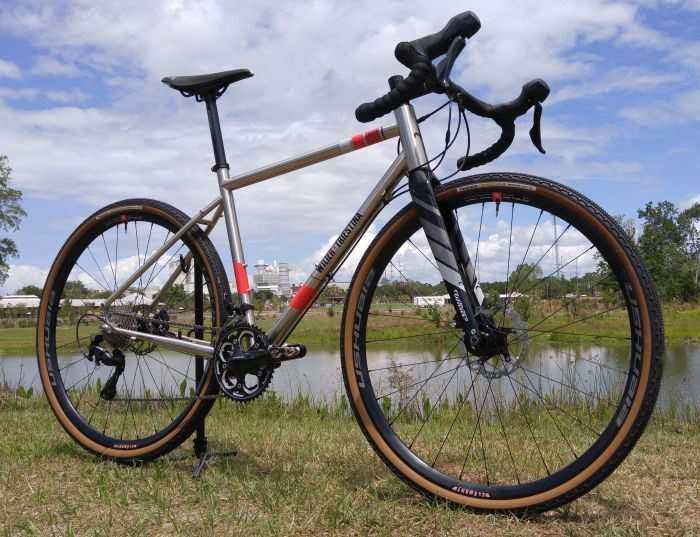
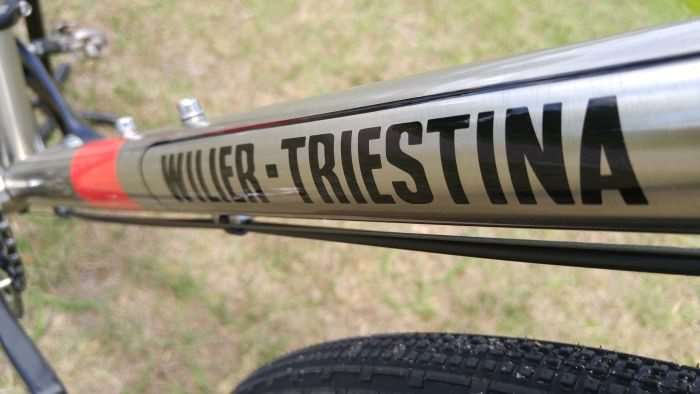
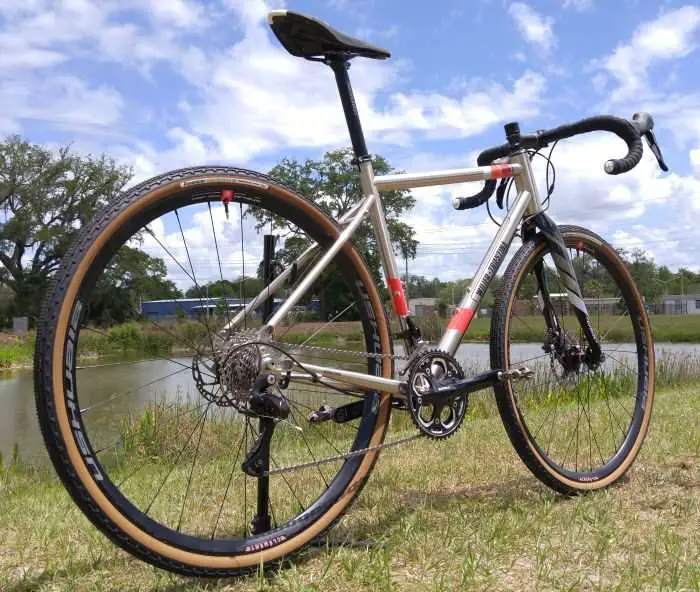
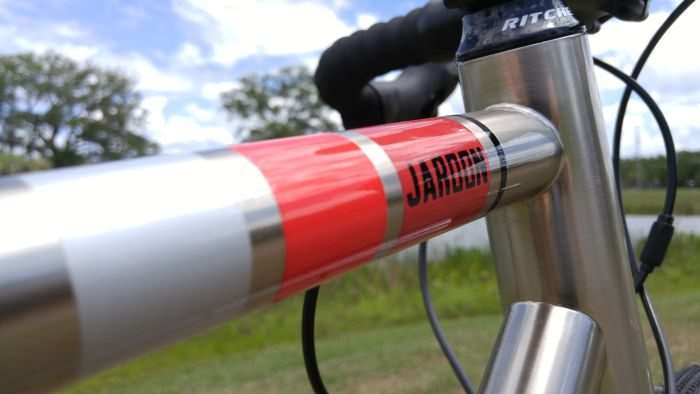
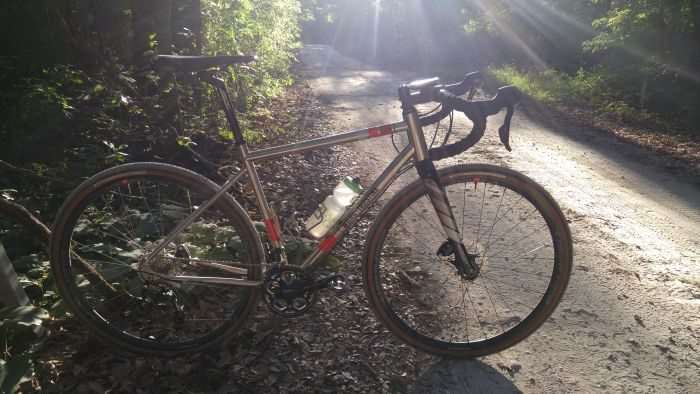
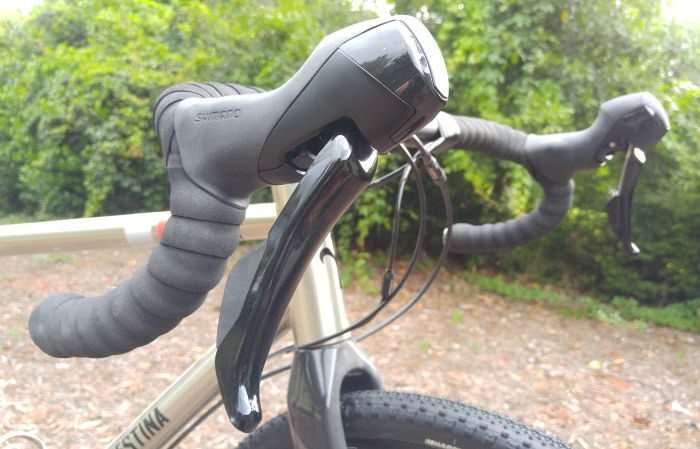
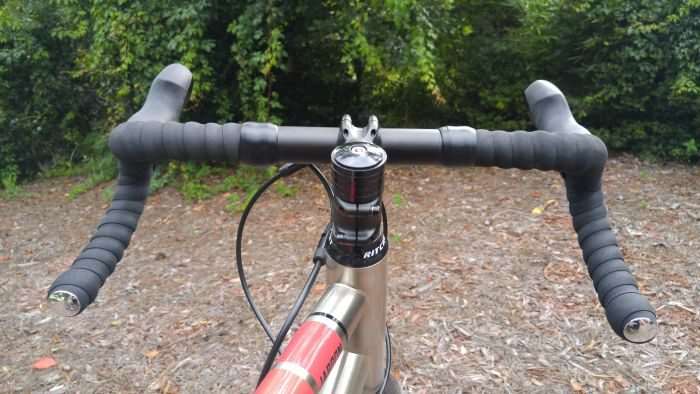
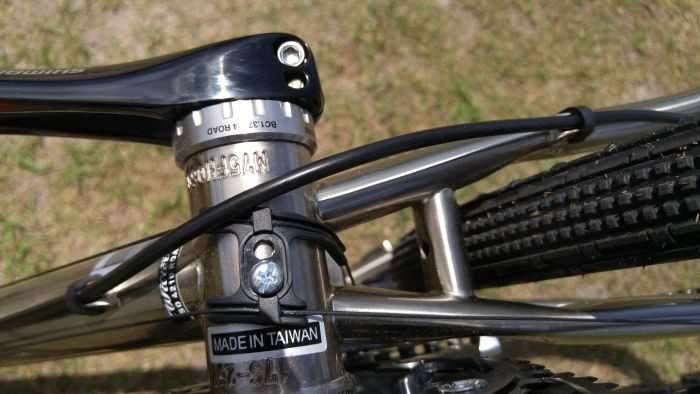
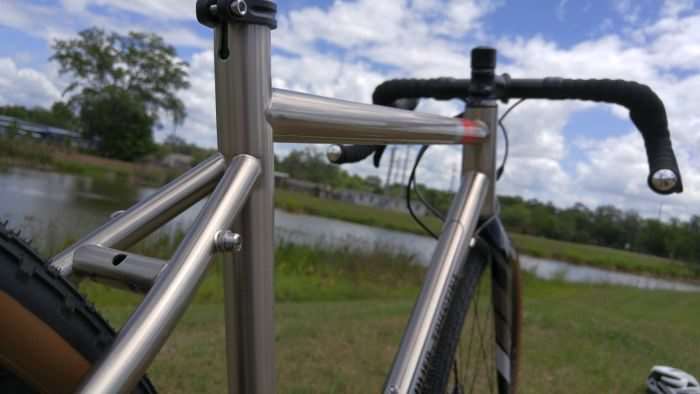
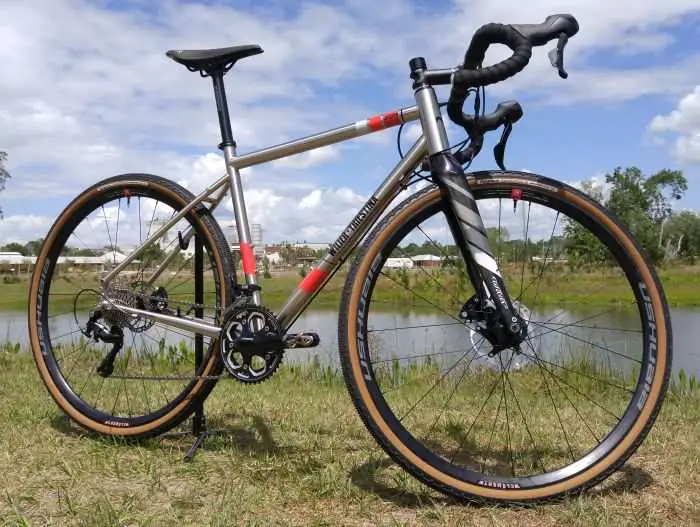
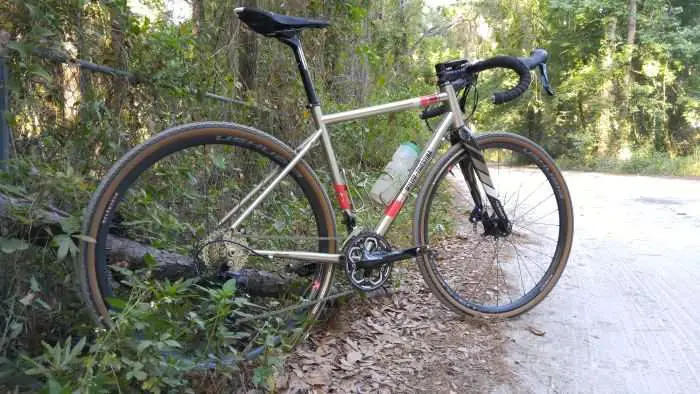
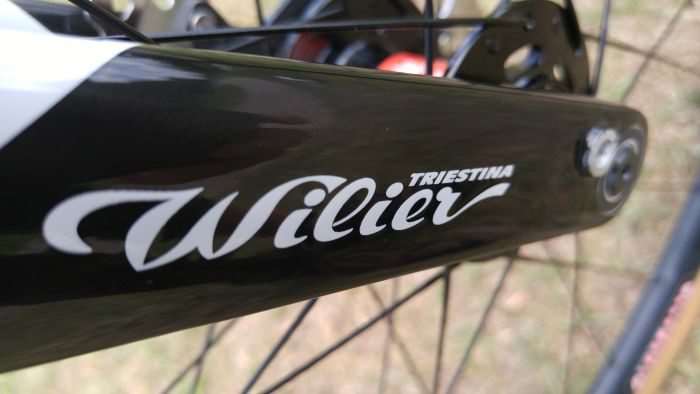
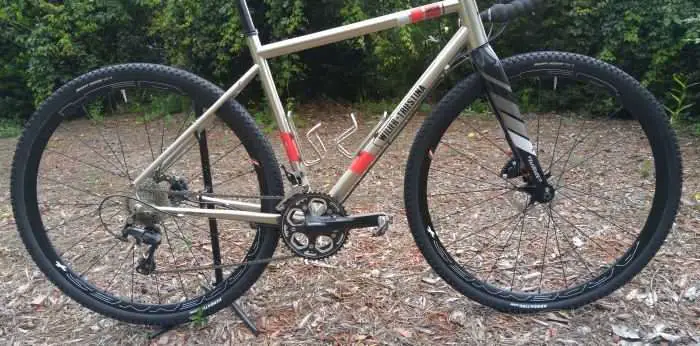
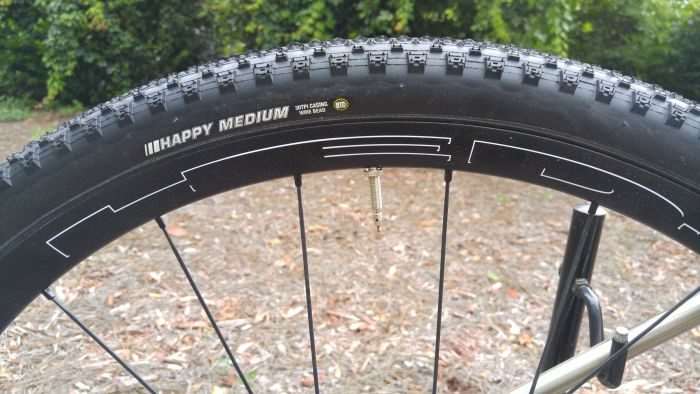
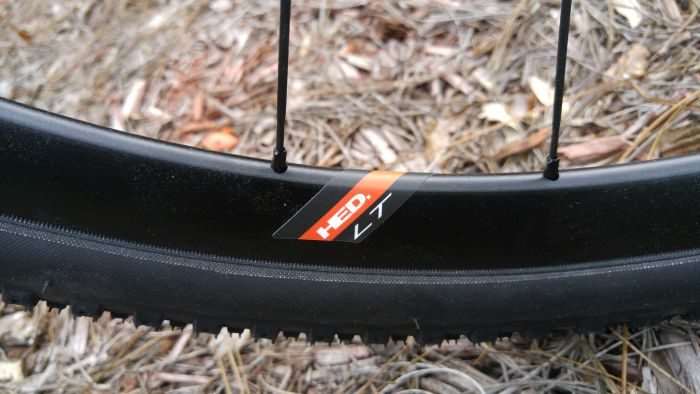
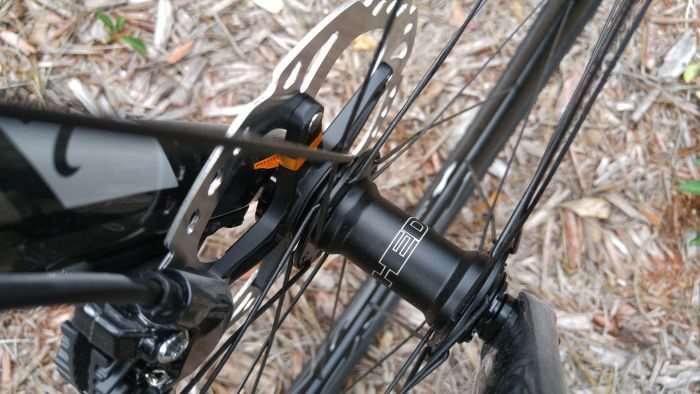
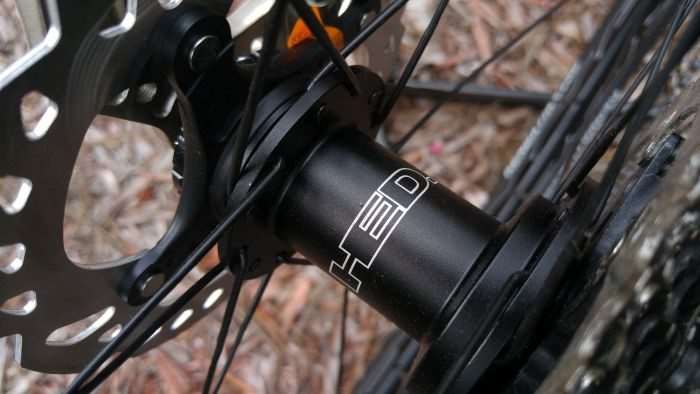
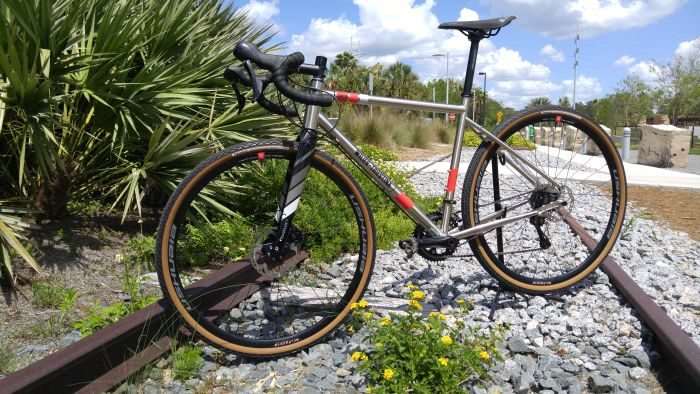
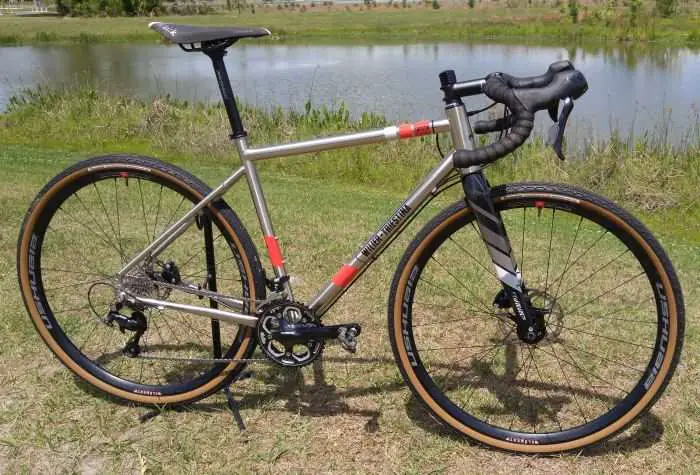
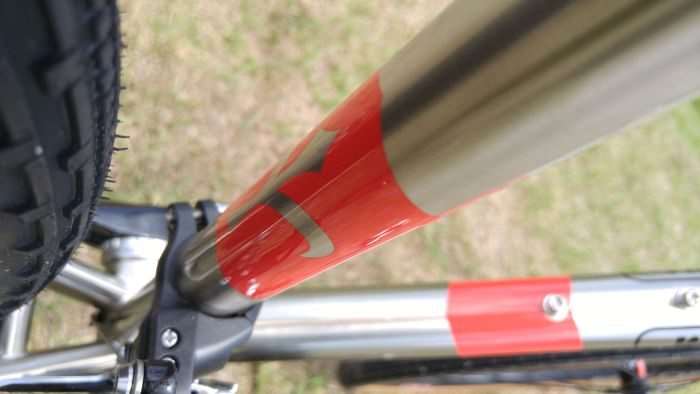
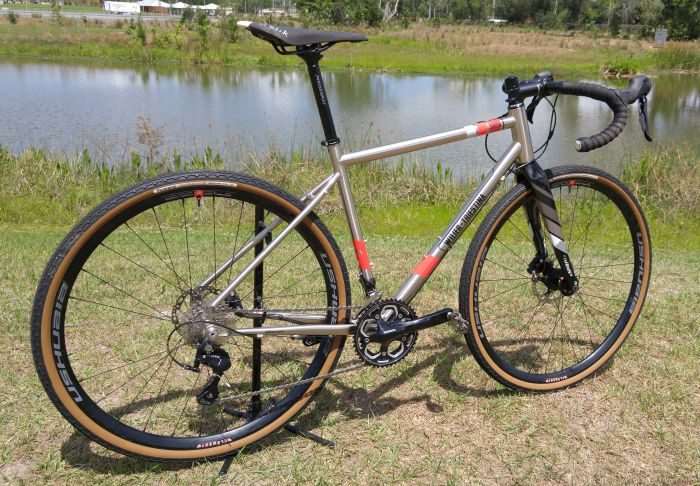
Did you happen to weigh the bike without pedals and with the stock wheels? Curious on the weight of the bike
Thanks for the review.
The 2018 model comes with a 46/30 on the front and 11-32 on the back. So better for climbing.
That is my FAVORITE setup for climbing, well done to Wilier!